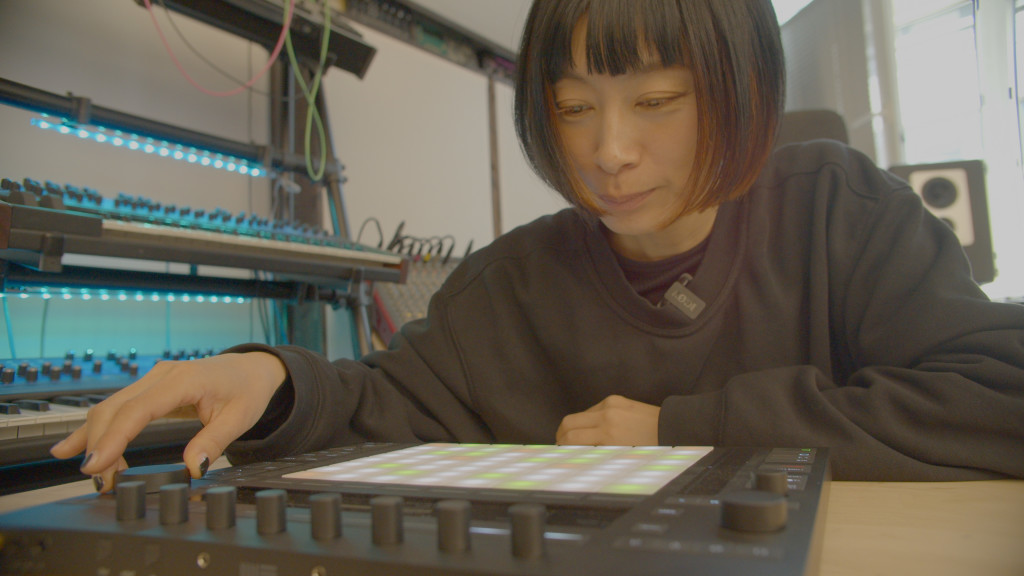How does the new Ableton Push perform as an instrument – with those new expressive pads? We invited artist Kyoka (Raster) to try out Push in live improvisation.
Kyoka, the Japanese-born, Berlin-based composer,producer, and sound artist known for her outings on Raster (nee Raster-Noton), has always had a knack for spontaneous experimentation. This was really an experiment – Kyoka had some basic experience on Push 2, but had lately been performing on other standalone hardware. She walked in the door, we played with some instruments and effects and kept the camera rolling. As Kyoka herself emphasizes, it was “improvisation with zero preparation, zero plan – just let it flow.”

Push’s strong suits and tradeoffs remain. There’s still some task switching – swapping the encoders between instrument parameters and mixing, for instance. But there’s also the inspiration of discovering new things – and all the capabilities the Push’s multiple features allow, now even without a computer. And the grid of pads has more potential than ever. (Kyoka did bring along her self-produced sound sample library, then warped it beyond recognition in Simpler and with the effects.)
Here’s what happened:
For more on expression, here’s a hands-on video exploring how the grid itself works. The first part of the video works with Tension and Corpus, the AAS-engineered physical modeling instruments in Ableton Live (and some Hybrid Reverb). These are both on the standalone mode instrument; I just started with the init and dialed in some settings while playing, which is hugely satisfying. I’m playing in (not really tuned, mainly pentatonic) pelog as mapped on the instrument. But it’s a sort of imagined – if plausible – instrument.
I intentionally left some mistakes and rough edges – the beauty of this is that you can treat this like an acoustic instrument. Note what happens as I demo changing sensitivity parameters.
Then, you’ll see a brief example of how you can modulate synthesis parameters in Drift – these are just the defaults – by wiggling your finger on the X/Y dimensions of the pads and applying more or less pressure.
There’s a lot more to explore here. But this is already an ideal physical modeling instrumental interface. And I think in general this calls attention to all the possibilities of MIDI Polyphonic Expression generally, as found on instruments like the Roger Linn LinnStrument, Joué Play, and Madrona Labs Soundplane – all of which will also work seamlessly with Live’s built-in devices now. (You can even use these with the new Push – since it’s all MIDI.)
More Kyoka
Catch more of Kyoka’s music:
June 13, 19.00 – 23.45
Dommune – TBA
https://www.dommune.com/Aug 24
Mutek Montreal
Kyoka Solo (Hardware Live Set)
https://montreal.mutek.org/en/artists/kyoka-2Aug 25
Mutek Montreal
Kyoka & Shohei Fujimoto (CINEMA BLACKBOX) – For neuroscience, sound and visual research
https://montreal.mutek.org/en/artists/kyoka-shohei-fujimoto
And some other live sets from her from the past – including a preview of what to expect at MUTEK this year: